Schmersal Switch Disconnectors
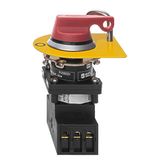
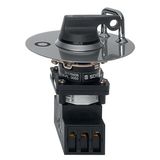


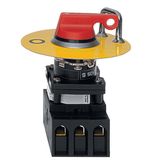
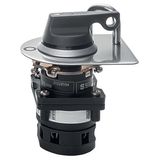
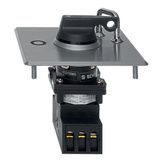


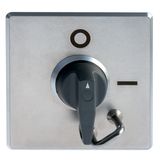
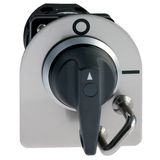
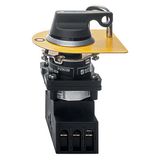
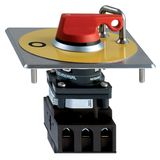

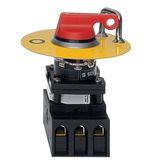
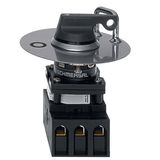

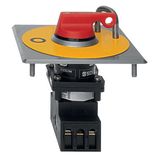
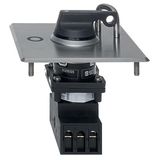
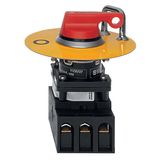

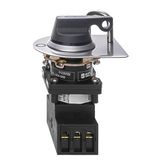

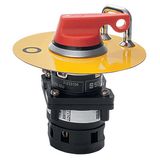

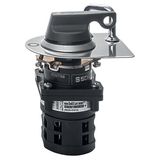
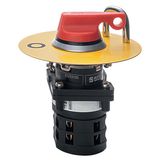
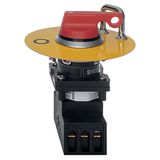
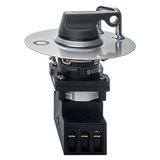

Schmersal Switch Disconnectors for verified isolation
Designed for machinery where energy must be made unambiguously safe, these rotary and door-coupled units provide visible, lockable OFF positions and positive contact separation. Ratings typically cover 690 V AC systems with current frames from 16 A to 125 A, 3- and 4-pole. Utilization categories AC-21A/22A/23A are available for resistive, mixed, and motor loads. Handles in red/yellow execute main isolator duties per EN 60204-1; black/yellow variants serve local sections. Door-coupling shafts, padlock hasps, and defeatable interlocks support LOTO routines during maintenance and tool change.
Product series and assortment for OEM panels
For panel builders, the range divides into practical classes:
- Door-coupled main isolators for cabinet fronts, with shaft kits in multiple lengths and padlockable 0-position to keep doors locked until OFF is achieved.
- Base-mounted switch bodies for internal rail mounting, paired with external handles through a coupling. Compact footprints free space for contactors and drives.
- Enclosed field isolators in sealed housings for near-machine mounting; cable glands and through-feed terminals speed line commissioning.
- Changeover and 4-pole variants for TN-S systems and generator transfer on skids.
Auxiliary blocks (NO/NC) snap on without tools, providing reliable position feedback to safety relays or PLC inputs.
Technical specifications and standards
Conformity follows IEC/EN 60947-3 for switch-disconnectors, with dielectric strength typically ≥ 2.5 kV r.m.s. Short-circuit coordination is achieved with upstream gG/gL fuses; Icc values and let-through requirements are stated per frame size. Terminals accept fine-stranded conductors with ferrules—commonly up to 10…16 mm² depending on current rating. Mechanical endurance exceeds 10,000 operating cycles for door-mounted types; environmental limits run −25…+70 °C. IP ratings reach IP65 for door hardware and IP66/IP67 on sealed field enclosures. Marking windows and legend plates align with cabinet documentation standards used in EPLAN and similar CAE tools.
Schmersal Safety Switches in isolation schemes
Where the isolator provides the disconnection function and the guard system provides the permission to restart, combining coded guard sensors, safety relays, and the isolator yields a tidy architecture: the isolator removes power to the actuator group; the safety chain verifies safe state via EDM; restart interlock prevents nuisance resets. This pairing reduces ad-hoc interposing relays and keeps wiring consistent across machine families.
Integration and system architecture
Isolators sit upstream of motor starters, VFDs, and power supplies. Auxiliary contacts indicate I/O-safe status to safety controllers; feedback contact blocks are mapped to “door open” or “main OFF” states in the PLC. Uniform 45-mm handle geometry, shared shaft kits, and identical terminal numbering make multi-model cabinets easier to standardize. For distributed cells, enclosed units mount at the machine boundary so technicians can lock out locally while upstream feeders remain energized for other zones.
Applications and enclosure options
Common placements include conveyor sections, packaging cells, and robot tool stations. Door-coupled units act as the cabinet main; compact base-mounted bodies isolate servo groups; sealed housings serve wash-down areas and dusty processes. When retrofitting, matching cutout patterns and shaft centers avoids door rework. Use auxiliary early-make/late-break combinations when PLC diagnostics must confirm OFF before allowing guard unlocking.
Selection guidelines for B2B teams
Define the duty: AC-23A for motor feeders with high inrush; AC-22A for mixed loads. Size to the motor FLA with headroom for ambient derating and conductor temperature class. Decide on 3- or 4-pole isolation depending on neutral switching policy. Choose door-interlock features (defeatable or not) per risk assessment. Confirm short-circuit coordination with the upstream fuse/breaker; check the manufacturer’s I²t and conditional short-circuit current tables for the selected frame. In multi-shift plants, prefer screwless or captive-screw terminals and front-removable auxiliary blocks to cut service time.
Procurement notes and interoperability
For large OEM bills, standardize handle colors, shaft lengths, and auxiliary contact configurations across all frame sizes. Keep spare shafts and legend plates in the service kit to speed replacements. These devices integrate cleanly with Schmersal safety controllers, guard sensors, and emergency-stop devices, allowing one vendor stack for detection, logic, and disconnection.
Advantages of working with Bankoflamps
Bankoflamps supports project pricing aligned to your BOM, with live stock visibility across EU warehouses before you place the order. Quotes are typically turned around in about an hour, and ordering by EAN/MPN minimizes entry errors. Your portal provides downloadable, current price lists, order status, and lead-time tracking; approved partners can use post-payment terms up to 30 days. We consolidate partials into fewer shipments to reduce freight spend and confirm stable pricing windows so phased builds stay predictable. A dedicated account manager helps align isolators, auxiliaries, and accessories for clean panel integration.